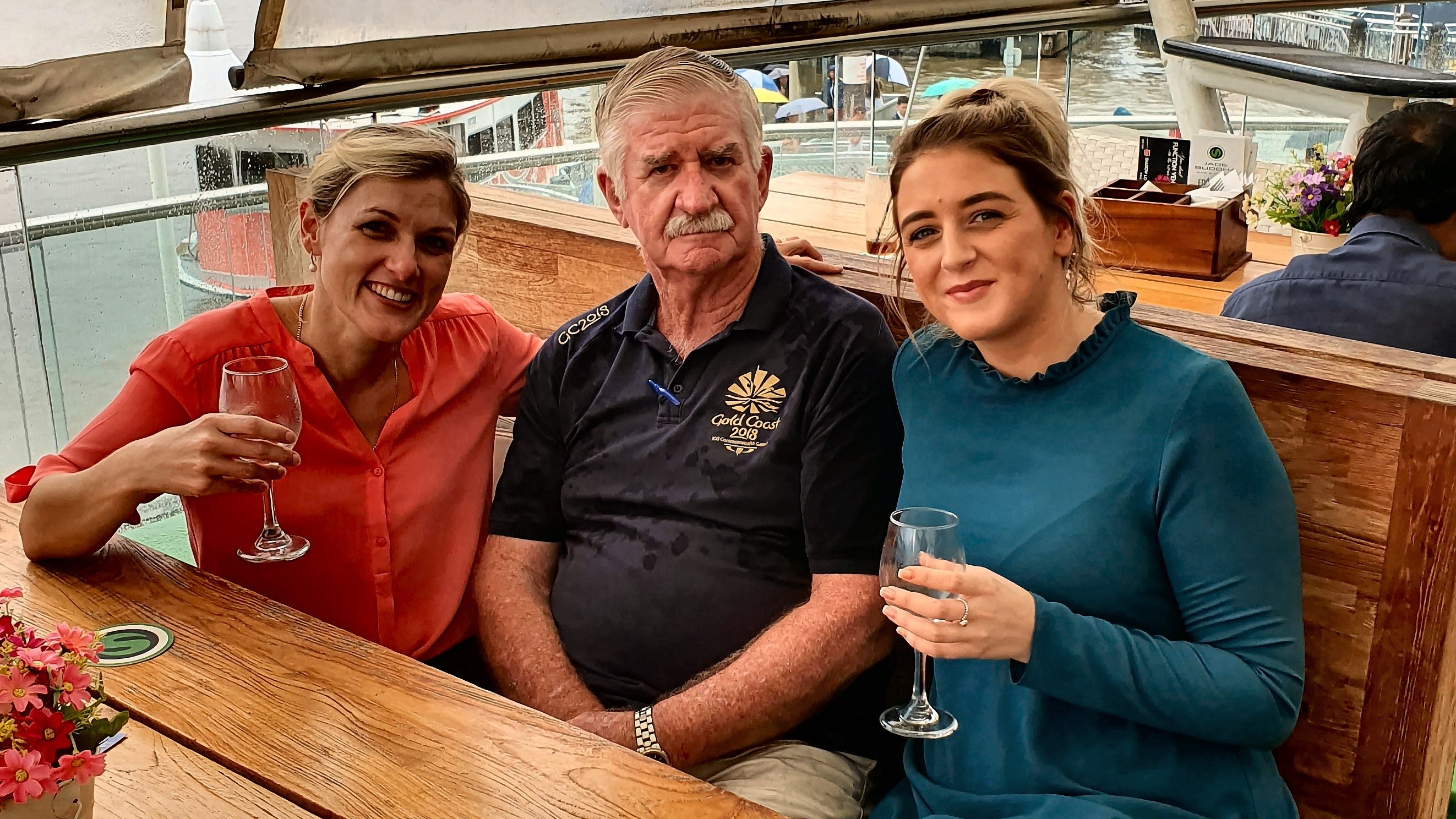
|
Vol 69 |
Page 8 |
Privacy Policy | Editorial Policy | Profit Policy | Join the Association | List of Members | Contact us | Index | Links
Back Go to page: 1 2 3 4 5 6 7 8 9 10 11 12 13 14 15 16 17 18 19 20 Forward
Contents:
First Vampire to visit Amberley
Some of the pics in this story have been crunched to allow the page to open quickly. You can get the HD version by clicking each pic.
Just the other day, as the weather was a bit crook and I had a few hours to kill, I decided to pop into town and enjoy a meal and the odd sugar free coke at Brisbane’s finest, the Jade Buddha. Normally I’d be doing some beneficial work, helping old ladies across the street, vacuuming floors for the elderly or sorting donated clothing at Saint Vinnies but with the rain bucketing down, none of that was possible so I had a bit of time to myself.
For many years I’d been blessed with Radtechitis and knowing the effect it had on the populous, I was always careful to mask its allure before venturing forth from my well-guarded residence. A good tub and a thorough scrubbing with Solvol before dressing followed by a liberal application of Old Spice usually did the trick after which I could normally blend in with lesser folk and not cause an attraction stampede.
So, on this inclement day in late summer, which was most unusual for Queensland, I was seated alone at the Jade, pondering Schrodinger’s equation and thinking to myself that as it is such a simple equation and so easy to understand that it is a wonder no-one had thought of it earlier. In our opinion, understanding quantum mechanics is after all not all that different to understanding the workings of the internal combustion engine.
On this particular day, while engrossed in my thoughts, I failed to notice the wind swinging around from the east and a spatter of rain feel on my uncovered arm and washed away a minute amount of the Radtechitis protection I had so generously applied earlier in the day. Immediately the protection was removed a small whiff of Radtechitis escaped. I was instantly on alert and grabbed the bottle of horse-radish sauce that had been placed on each table by mine host, removed the lid and smeared some upon my arm, confining the Radtechitis to my person once again.
As no-one in the restaurant seemed to notice I thought I was safe, no one was up on their feet, with eyes bulging, shouting and pushing each other looking for the source so I figured that whiff had been dissipated by the storm.
How wrong I was.
That nefarious wind had picked up the whiff and once aloft, it had soared far west of the city only to settle in the Lockyer Valley, about 100km away.
On that day, two lovely young ladies were decked out in shorts and gum-boots and were bent at the waist harvesting broccoli and artichokes in one of the paddocks, when that whiff of Radtechitis descended upon them. All reason immediately left them, they began running on the spot, lifting knees high and turning in a clockwise direction until they discovered the direction from which that alluring Radtechitis had come. Once certain of its origin, they discarded the shorts and gum-boots, donned a frock and crocks, popped on a hair net, a bit of rouge and lippy and after firing up the old DeSoto ute headed for the big smoke at a rapid rate of knots. Leaving the DeSoto on the footpath in front of the Jade, they rushed inside and draped themselves upon my person lapping up some Radtechitis.
After 57 minutes, I was forced to extract myself from their clutches, they left quietly, smiling broadly, hopped back in the venerable old ute and headed west. Such is the burden a Radtech must endure!
Janine O’Connor, honourable self, Lucy Myers.
These lovely young ladies work for HealthX. HealthX began in 2008 when they set out to solve nursing shortages across regional and remote Australia. They saw a desperate need for experienced nurses in these areas which had a limited capacity to recruit locally. They set about attracting and employing highly skilled nurses from overseas, to build long term nursing capacity within these regions.
HealthX is not a nursing agency and not a recruitment company. They are the proud employer and sponsor of nurses that provide long term and sustainable nursing care for client organisations and provide short term, long term and aged care nursing opportunities for overseas nurses wishing to work in Australia.
They have an office in Brisbane and an office in London. Further info HERE.
Police came around last night and told me my dogs were chasing people on bikes.
My dogs don’t even have bikes.
Brendan Godwin
Radio Technician Ground
RAAF RadSchool Laverton 1967-1968
Tracing the origins of what was the RAAF School of Radio or RadSchool has not been easy and the current research leaves holes and gaps.
It appears that the first School of Radio was at RAAF Base Ballarat. Following the outbreak of the Second World War a RAAF base was constructed in Ballarat in 1940. After the Second World War ended the base became a radar training school in 1945.
The former Ballarat RAAF Base on the site of the present Ballarat Aerodrome, 7 km northwest of Ballarat city centre, was constructed in 1940 at the outset of the Second World War as a training school for Wireless Air Gunners (WAGS) under the Empire Air Training Scheme (EATS). [Wireless Air Gunners were wireless operators who were cross trained as gunners as a backup in case any of the gunners were KIA. They were sent to East Sale for gunnery training.] By the time the war ended more than 5000 trainees had been through the school, which was formerly disbanded in 1946, but remained property of the RAAF until 1961 when the radar school moved to the RAAF’s Laverton base in Melbourne.
Ballarat. 1960.
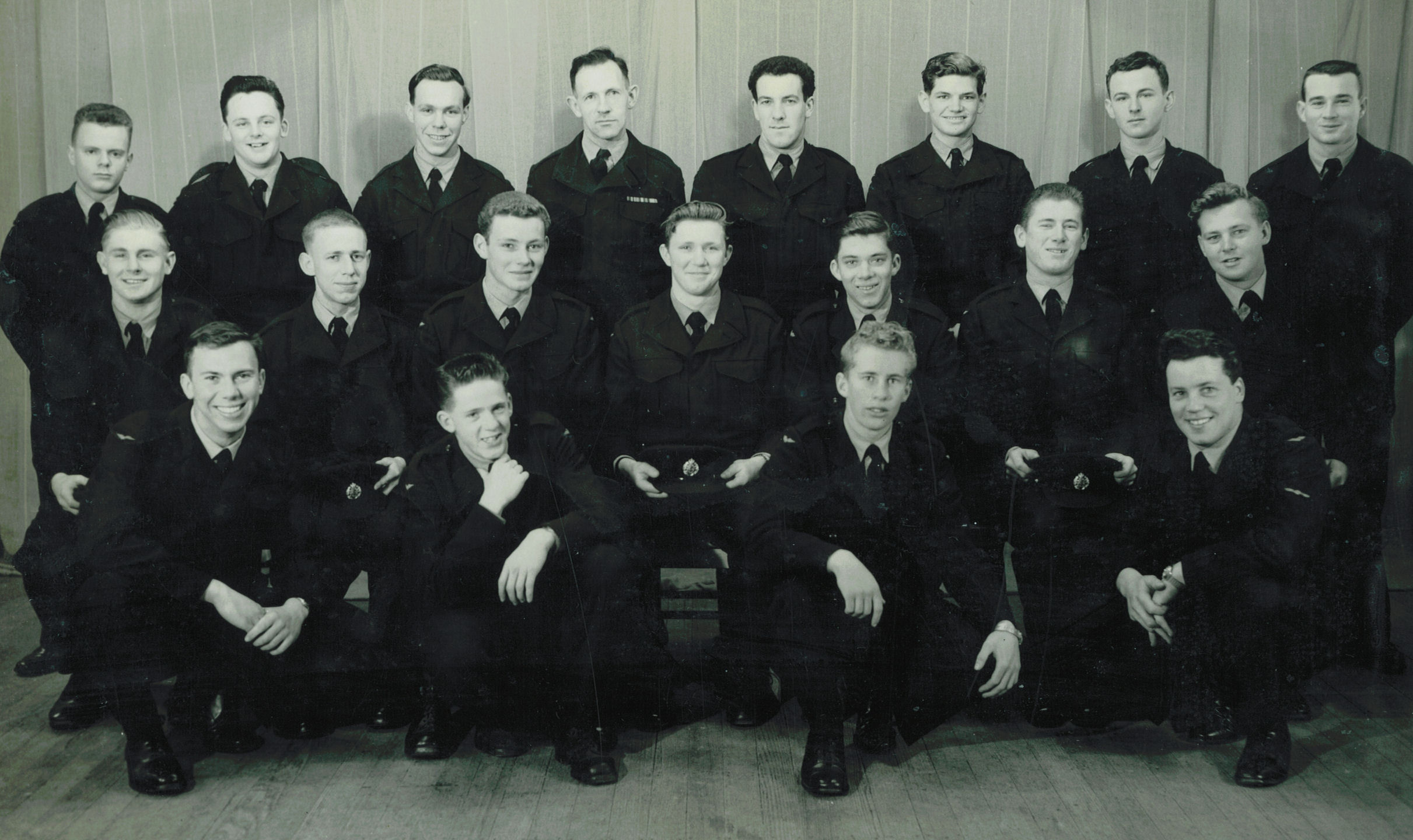
Back Row L-R: John Archer, J Randle, Bill Scheske, Phil Burrill, Tony Bucci, Bill Thomson, John Thompson, Kel Martin.
Middle Row L-R: Phil Mole, Neville Mackay, Jeremiah Cleary, Peter MacNamara, Neville Stark, Allan Thompson, Bruce Hurst.
Front Row L-R: John Dare, Bernie Radel, Geoff Waugh, Laurence Cook.
After World War II, Ballarat Airport was the home of the RAAF School of Radio. A radar training wing was established at the Ballarat RAAF Base in 1945. This school moved to Laverton, Victoria, in 1961.
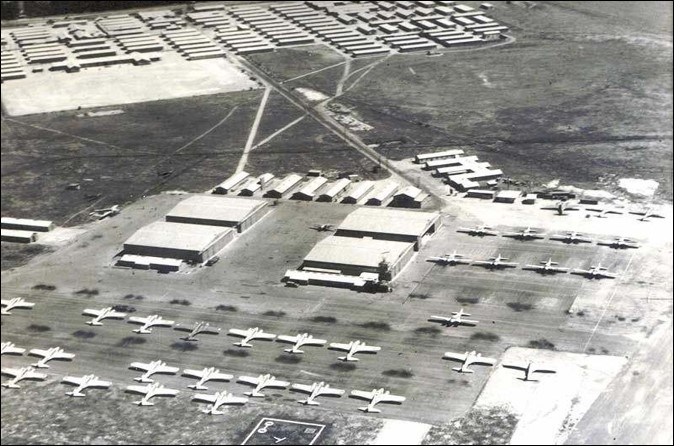
RAAF Base Ballarat during WWII
RAAFSTT’s (School of Technical Training) proud history extends back to 1st March 1940 when No 1 Engineering School was formed in Melbourne. After World War II, No 1 Engineering School retained its wartime training role and moved to facilities at RAAF Station Forest Hill near Wagga Wagga. The unit was reformed as the RAAF Ground Training School on 4 February 1946, was renamed as the RAAF Technical College in May 1950, and assumed its current name on 1 December 1952. From its inception, the School has focused on delivering capable technical tradespeople to maintain Air Force’s operational edge.
From all of this, trying to piece together what was taught where is a bit of a puzzle. Some things we know for certain.
Ballarat had Radio Mechanics training and a radar school up until 1961. Where the Radio Technicians training was conducted during the period 1946 to 1961 is uncertain but most likely Ballarat. We know from 1946 to 1961 RMC was at Ballarat. From 1946 to 1961 it is possible RadMechs training was at Ballarat, RadTech fitters training was at Wagga then back to Ballarat for Radar. It is also possible the whole lot was at Ballarat. But it is absolute from 1961 to 1966 both RMC and RMT were conducted at Wagga.
The RAAF Air Power book Aircraft technical trade development sheds a little more light on this at pages 3 to 8. Ballarat was named the RAAF School of Radio (RADS) in December 1952 and taught Air and Ground radio training. Running parallel with the Air and Ground Radio school was the RAAF Radio Apprentice School formed at Frognall, Victoria, in December 1947. This school too was transferred to Laverton in late 1960 and was incorporated as a squadron of RADS in 1961.
In 1948 the first intake of radio fitter (air) and radio fitter (ground) telegraphist mechanic apprentices were embarking on their careers in Victoria, at the Melbourne Technical College. It doesn’t say but these had to have been posted to RADS Ballarat. During the war some 5,500 radio tradesmen had been trained at Melbourne Technical College (MTC) below.
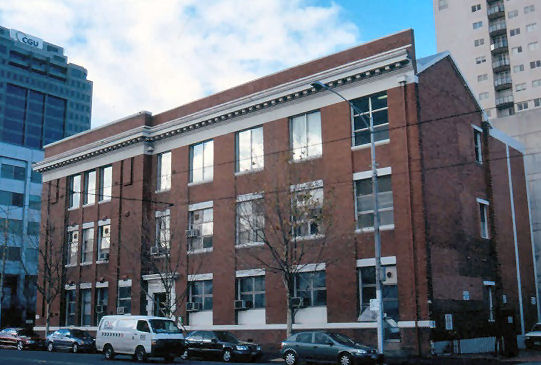
The first two years of the course were completed at Melbourne Technical College followed by a third and final year conducted at the RAAF Air and Ground Radio School in Ballarat. In 1961 the training was transferred to RAAF Laverton after Ballarat's closure. Radio training was carried out there until the amalgamation of technical training in 1993.
According to the RAAF's head of technical services from 1960 to 1972, Air Vice Marshal E. Hey, the RAAF apprentice scheme was one of the best things the Air Force ever did and its graduates were absolutely outstanding. It did appear though however that the downside of this scheme was that it was taking too long to get graduates into the field and the RAAF started concentrating on their adult trainee program. Up until apprentice course 19 in the late 1960s, apprentices, who were just 15 years old, had to sign up for 15 years, equal to a lifetime that they had already lived. From course 20 on, they were given an option of 9 years. Apprentice graduation took 2.5 years compared to 18 months for adult trainees.
Initially, technical training for adult trainees was broken into two major phases. Firstly, the trainees underwent mechanic training where they acquired generic hand skills supported by general theory which usually took about five months. Upon successful completion of this training, the adult trainees were posted to RAAF units for work experience and job exposure under direct supervision for approximately nine months. Once competence was believed to have been achieved in the field the trainees returned to RAAF Wagga (below) for fitter training before graduation as an aircraftman. Up to 50 mechanics were graduated each year from both RADS and RAAFSTT. This requires some reading between the lines because it incorporates all the trades.
All of this provides some answers. 60% of the RAAF’s RadTech needs were being fulfilled from apprenticeships. Between 1946 and 1961 these were trained at the MTC and were based at Ballarat. Apprentices did 2 years at MTC and their final year of advanced electronics and radio at Ballarat. It still leaves the unanswered question, where did the adult trainees do their RTC course during 1946 to 1961? Ballarat certainly had the facilities to conduct RTC courses and probably did.
It was said that the school of radio and/or the radar school moved to Laverton when the Ballarat base closed on the 27th April, 1961 (See HERE)
The first Radio Mechanics/Technician course was held at Laverton around April 1966. Prior to that all electronic training was conducted at Wagga, however after 1961 apprentices were still trained at RMIT in Melbourne and completed their advanced electronics at RadSchool Laverton. By the late 1960 the first 2 years at RMIT gave apprentices a Certificate of Electronics Technology. They then spent 8-9 months at RADS or RadSchool where they split into Air or Ground (their own choice), doing a month on each RAAF equipment type, e.g., (Ground) HF TX and RX, VHF, UHF, QuadRadar, Microwave etc. They didn’t graduate until a further 2 years when they received their trade certificate.
When I arrived at Laverton in 1967 I went on to 17 RMT, a ground electronics course. There was one new course every month. By then they were alternating (approximately) each course Ground then Air then back to Ground. But that’s not exactly. 1RMRT was Air. 4RMT was Ground and 7RMT was Air. If it kept alternating, I was odd and should have been Air. Obviously the RAAF determined how many Air and Ground techs they required and organised the courses accordingly.
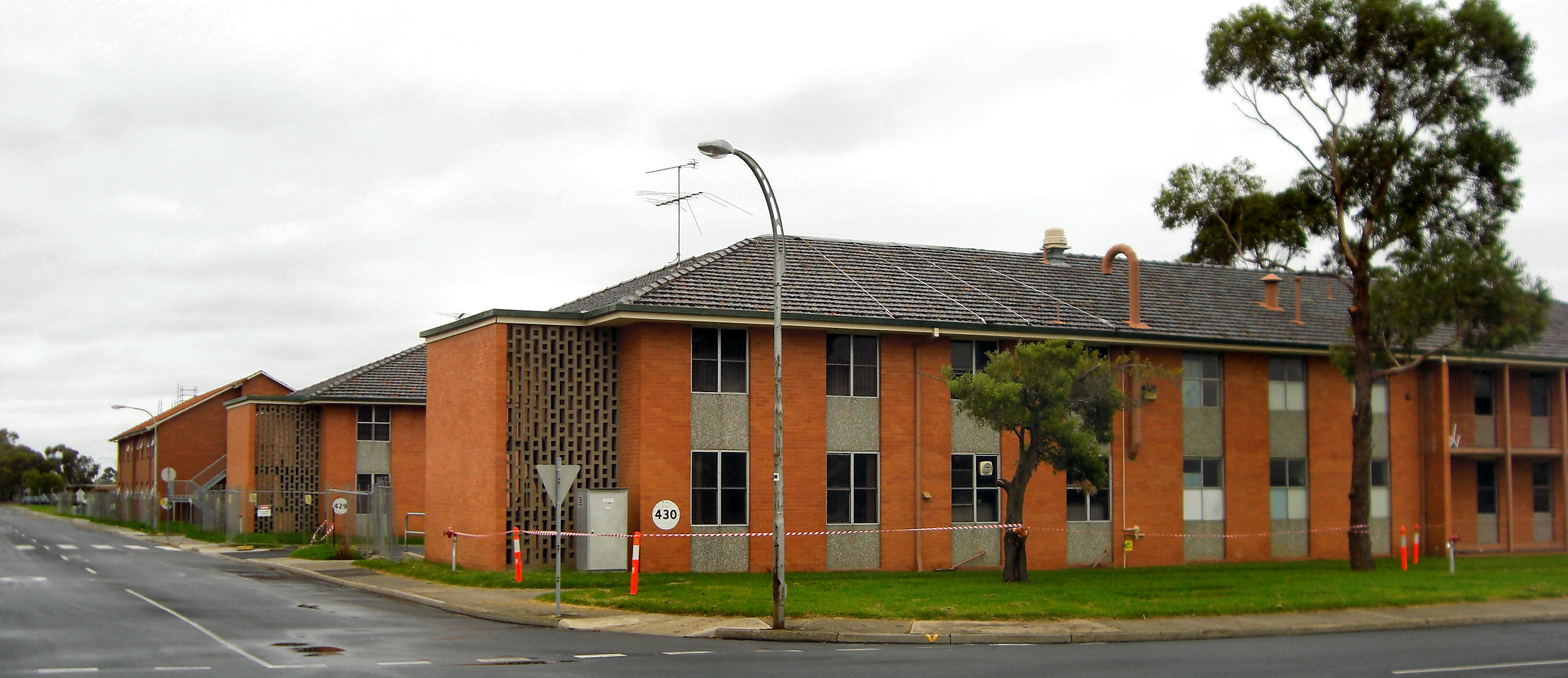
Laverton living quarters.
It was common knowledge that prior to April 1966, all the training was conducted at RAAF Base Wagga. Training was divided into a Radio Mechanics Course RMC and a Radio Technicians Course RTC. Between RMC and RMT, students spent some months out in the field on work experience. It is unknown what the RMC course entailed. Some time around 1965 the field experience was dropped and students went from RMC directly on to RMT training.
In early 1966 School of Radio or RadSchool Laverton began taking over from Wagga. The first course was 1 RMRT or Rad Mech Rad Tech. 4RMRT was the last of these. There was also a cutover from Wagga. Some members of 4RMRT did their RMC course at Wagga then came to Laverton to join 4RMRT for the radio technical training. But most of 4RMT came directly onto the course and did their Rad Mechs training at Laverton prior to doing the RadTechs training. These personal went on to 4RMT. The ones that came from Wagga were on 4RMRT. They were both the same course. I.e. 4RMT was the last of the RMRT courses and the first of the RMT courses. Those that came from Wagga skipped the RadMechs training at Laverton and joined the course at Rad1.
So reading between the lines it would appear that after the school of radio closed at Ballarat, between 1961 and 1966, RMC and RMT training moved to Wagga. It is entirely possible that those who completed their RMC and RMT at Wagga, if they were to be posted to a ground based radar unit came to Laverton to do the radar course.
The RAAF Unit History sheets from the Operations Record Book for the School of Radio Laverton date from February 1961 through to July 1982. These records have not been viewed. [Sourse: National Archives Series No. A9186, Control symbol 470, Item Barcode 1360135.] Even though NAA records show RadSchool Laverton ceasing in 1982, Ron Batchelbor, Executive Officer from SST Wagga says that RadSchool Laverton continued until the 1990s sometime. He went through RadSchool Laverton in 1984.
RadSchool moved from Laverton to Wagga on the 31 December 1993 following the introduction of the Technical Trade Restructure (TTR) Aircraft technical trade development
When I arrived in 1967 at Laverton, the RadMech course
was called “Basic Fitting”. This was held in the hanger beside ARDU. It
consisted of wood work, metal work and lathe work. It was for one month
and the next month we commenced the RadTech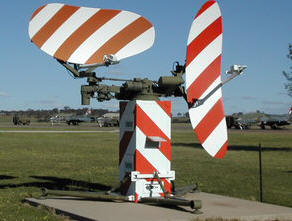 course with Rad 1 in the igloo huts. Rads 1 to 5 were basic electronics.
Rad 6 was pulse and digital, test and maintenance and oscilloscopes. Rad
7 was radar, Rad 8 was servo motors and analog computers. This was scattered. We did radar theory in the RadSchool
lecture rooms and moved to a hanger on the tarmac where we learned the
Quad Radar. This was detached from the main RadSchool area. They had a
Quad Radar set up outside the hanger with monitoring PPIs and screens
inside the hanger. The Quad Radar was at Ballarat in 1959 for technical
training and this one at Laverton almost certainly came from Ballarat
when the radar school was moved from Ballarat to Laverton in 1961.
course with Rad 1 in the igloo huts. Rads 1 to 5 were basic electronics.
Rad 6 was pulse and digital, test and maintenance and oscilloscopes. Rad
7 was radar, Rad 8 was servo motors and analog computers. This was scattered. We did radar theory in the RadSchool
lecture rooms and moved to a hanger on the tarmac where we learned the
Quad Radar. This was detached from the main RadSchool area. They had a
Quad Radar set up outside the hanger with monitoring PPIs and screens
inside the hanger. The Quad Radar was at Ballarat in 1959 for technical
training and this one at Laverton almost certainly came from Ballarat
when the radar school was moved from Ballarat to Laverton in 1961.
During my 18 or so months at RadSchool Laverton, there was always a Navy group doing their electronic training. The RAAF trained the Navy techs.
From 1993, Air and Ground techs got divided. What used to be called RadTech Air, became Avionics Technicians. These are trained at the RAAFSTT at Wagga. RadTech Ground are now called C E Techs – Communications and Electronics Technicians. They are trained at HMAS Cerberus Crib Point Western Port Bay on the Mornington Peninsula, south of Melbourne. Just to show some things don’t change, Navy avionics techs, equivalent to RadTech Air, do their training at STT Wagga. But the Navy equivalent to RadTech Ground, now CE Techs, do their training at Cerberus (below).
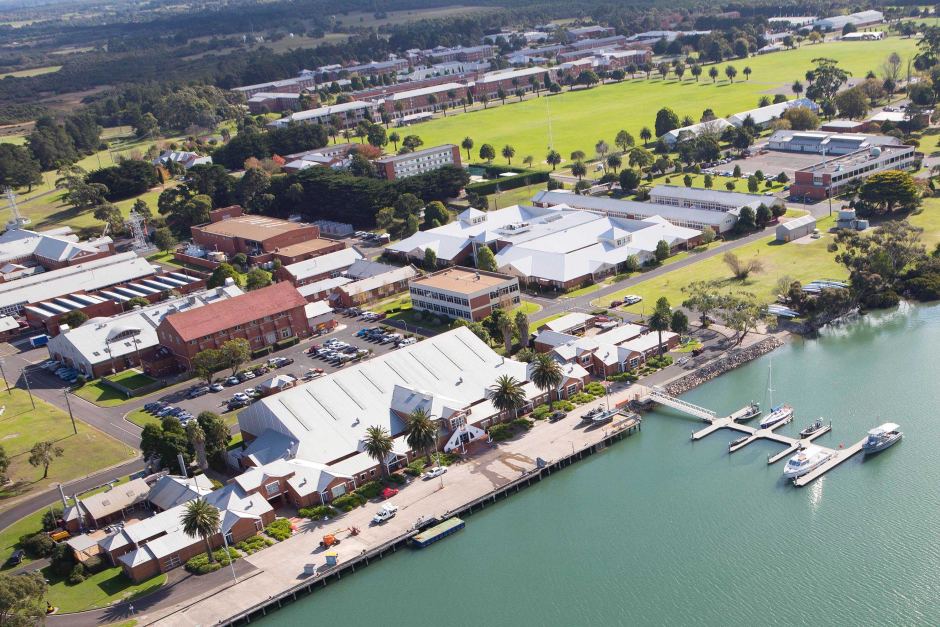
Summary
Radschool was formed at Ballarat in 1946. RAAFSST also commenced at Wagga in 1946 but there is no evidence of radio training being conduced at Wagga until 1961. Radio apprentices formed the bulk of trainees at this stage. The adult trainee program was also at Ballarat with RMC and RMT courses. When apprentices completed their 2 year basic electronics training at MTC, later RMIT, Melbourne, they returned to Ballarat to complete their advanced electronics training. The RAAF radar school was also at Ballarat with the Quad Radar.
In 1961 Ballarat closed and RadSchool was moved to Laverton. The adult trainee program with RMC and RMT courses moved to Wagga. Apprentice advanced electronics training moved to Laverton and the Radar school, along with the Quad Radar moved to Laverton.
In 1966 RMC and RMT training and the adult trainee program moved to Laverton and the complete radio and electronics training including apprenticeships remained at Laverton until 1993.
In 1993 RadTech Air became Avionics Tech and was moved to Wagga, RadTech Ground became CE Tech and moved to HMAS Cerberus. And this is how it remains to today.
We think there could be a few minor errors in the above story - your help invited - tb.
After l0 years a wife started to think their child looks kinda strange so she did a DNA test and found out the child is not theirs, she told her husband what she found out, the husband replied, “don’t remember do you?? When we were leaving the hospital the baby pooped and you told me go and change him so I went inside got a clean one and left the dirty one there” The wife fainted.
Back in 2015 we had a look at the Liberator that is being lovingly restored by a bunch of dedicated volunteers in Werribee (See HERE). As we were down that way recently, we asked if we could have another look to see how things were going and the blokes and ladies were only too happy to show us around. We did ask one of the ladies when they hoped to have the project finished, she, jokingly, replied, “never we hope, keeps the men from under our feet.”
In the few years since we’d seen it, you can definitely see progress and when you consider, you can’t just pop down to Bunnings for bits it’s a credit to the bunch of volunteers who have taken on the enormous job. With these old birds, there is no-spare parts department anywhere and if a part, even if it’s old and rusted, is not available from somewhere, it has to be hand made in the hangar. One day this magnificent old aircraft will be wheeled out of the hangar and the blokes will have to look for another project to keep the ladies happy.
The restoration work is being conducted in the hangar above, which, as one of the blokes told me, is a bit small and soon they hope to move the other remaining hangar left over from when Werribee was an operational aerodrome, down to the cut grass area at the back of the one above (see pic below).
How they plan to do that is anyone’s guess, the other one is a lot bigger, is about 200 metres away and you can’t just stick a fork lift under it and pull it across the grass. From the pic below, you can see the current hangar (top centre) and the only other remaining hangar (bottom left). During WW2, Werribee airfield, which was built in early 1940 as a satellite field for Point Cook and Laverton, was used for the storage of aircraft produced by CAC at Fisherman's Bend until required by the RAAF. It had an all over grass runway area with no defined runways.
It was also used for the assembly of aircraft coming from the UK. Initially there were 4 large hangars at Werribee as well as living quarters, messing facilities etc, but all but the 2 remaining hangars and the shed in the middle, have gone. The remaining two hangars have been added to the National Heritage Register. Most of the airfield has gone too and before long apart from the two remaining hangars, the once busy Werribee airfield will be a long gone memory.
During the war, it was home to a number of RAAF Repair and Salvage type units, including:-
-
1 Central Recovery Depot
-
9 Repair & Salvage Unit (9RSU)
-
12 Aircraft Repair Depot (12ARD)
-
22 Repair & Salvage Unit (22RSU)
-
26 Repair & Salvage Unit (26RSU)
The other hangar – up the road.
The Werribee Liberator, A72-176, is the last surviving Australian Liberator, all the other Australian aircraft had been sold for scrap and broken up. It is also the world’s only surviving B-24MR (R denoting radar equipped) aircraft. In 1988, the B-24 Memorial Fund was formed and it acquired the fuselage, which was found on a property in Moe, Vic. In 1948, the owner of the property had bought the fuselage as scrap in which to live for a number of years while he built his home. After he moved out, the frame was allowed to deteriorate and when found by Werribee Fund in 1995, it was in poor condition. The wing and tailplane of an American B24D had been recovered in New Guinea and brought to Australia in 1992. All those components have been put together and now form the aircraft being restored.
The Liberator was an American heavy bomber designed and built by the Consolidated Aircraft Corporation, the same company that built the Catalina. In 1943, Consolidated merged with Vultee Aircraft to form Convair. Convair was sold to General Dynamics in 1953 which was in turn was sold to McDonnell Douglas in 1994.
The Liberator went into production in 1940. The airframe was simple and the aircraft was very fuel efficient with its twin fin and rudder assembly providing excellent stability required for accurate bombing. It was the first aircraft to utilise the Davis wing, a thick wing profile which provided low drag and high lift. It also pioneered the tricycle undercarriage. Of the 18,842 aircraft built by Consolidated, the RAAF had 287.
Most Australian B-24 crews were trained at 7 Operational Training Unit at Tocumwal in rural NSW. At its peak in 1945, Tocumwal was a large base with 50 aircraft and over 5000 personnel.
I’ve got to stop saying “How stupid can you be?”
Too many people are taking it as a challenge.
As well as the airframe, the Fund also has many items of equipment associated with the aircraft, including:
Norden bomb-sight.
The Norden M series is a bombsight that was used by the United States Army Air Forces (USAAF) and the United States Navy during World War II, and the United States Air Force in the Korean and the Vietnam Wars. It was an early tachometric design that directly measured the aircraft's ground speed and direction, which older bombsights could only estimate with lengthy manual procedures. The Norden improved on older designs by using an analog computer that continuously recalculated the bomb's impact point based on changing flight conditions, and an autopilot that reacted quickly and accurately to changes in the wind or other effects.
Together, these features promised unprecedented accuracy for daytime bombing from high altitudes. During pre-war testing the Norden demonstrated a circular error probable (CEP) of 75 feet (23 m), an astonishing performance for that period. This accuracy would enable direct attacks on ships, factories, and other point targets. Both the Navy and the USAAF saw it as a means to conduct successful high-altitude bombing. For example, an invasion fleet could be destroyed long before it could reach U.S. shores. To protect these advantages, the Norden was granted the utmost secrecy well into the war and was part of a production effort on a similar scale as the Manhattan Project. Carl L. Norden, Inc. ranked 46th among United States corporations in the value of World War II military production contracts.
Under combat conditions the Norden did not achieve its expected accuracy, yielding an average CEP in 1943 of 1,200 feet (370 m), similar to other Allied and German results. Both the Navy and Air Forces had to give up using pinpoint attacks. The Navy turned to dive bombing and skip bombing to attack ships, while the Air Forces developed the lead bomber procedure to improve accuracy and adopted area bombing techniques for ever larger groups of aircraft. Nevertheless, the Norden's reputation as a pin-point device endured, due in no small part to Norden's own advertising of the device after secrecy was reduced late in the war.
The Norden's secrecy had already been compromised by espionage before the United States entered the war. As early as January 1941, the Germans introduced a lightened derivative of the Norden called the Carl Zeiss Lotfernrohr 7 as the primary bombsight for most Luftwaffe level bombers and the first of its bombsights to have gyroscopic stabilization.
The Norden saw reduced use in the post-World War II period after radar-based targeting was introduced, but the need for accurate daytime attacks kept it in service, especially during the Korean War. The last combat use of the Norden was in the U.S. Navy's VO-67 squadron, which used them to drop sensors onto the Ho Chi Minh Trail as late as 1967.
The Norden remains one of the best-known and most overrated bombsights ever invented.
The Liberator carried some “state of the art” radio equipment, one piece of which was the AN-ARP4 search radar receiver. This equipment was used to detect and analyse enemy radar transmissions, which were displayed on the adjacent BC909 CRT indicator on the left.
Once the frequency was determined, the operator would tune one of his transmitters and jam the enemy’s radar.
The aircraft was also fitted with the SCR-717 search radar.
This was a 10cm radar, capable of switching from 5nm, 20nm, 50nm and 100nm range views. The antenna could be switched from 360 scanning to 180 degrees north to 180 degrees south. It could detect ships from as small as 5000 tons at 70nm and surfaced submarines from 20nm. The antenna was fitted in the rectractable lower gun tunnet.
The museum is open to the Public on Tuesdays, Thursdays and on Sundays from 9.30am to 3.30pm. Entrance fee is on $5.00 per person. If you’re in the area, do yourself a favour and have a look, it’s definitely worth it.
Click HERE to see a small video on the project.
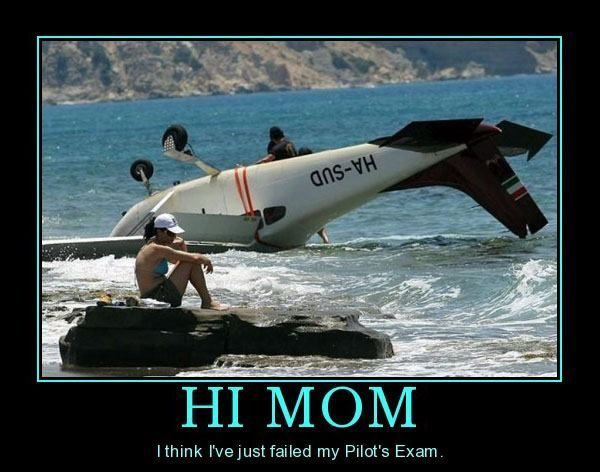
First Vampire to visit Amberley.
Back in May 1948, nearly 23,000 people were at Amberley to see a De Havilland Vampire aircraft flash over their heads at 500 m.p.h. and land after making two circuits, four hours behind its schedule. Six thousand of the visitors had been waiting for the Vampire since before lunch-time, and thousands of others had been waiting for at least two hours. At 11.30am when Brisbane people had been told it was due over the city, it was giving a demonstration flight over Sydney.
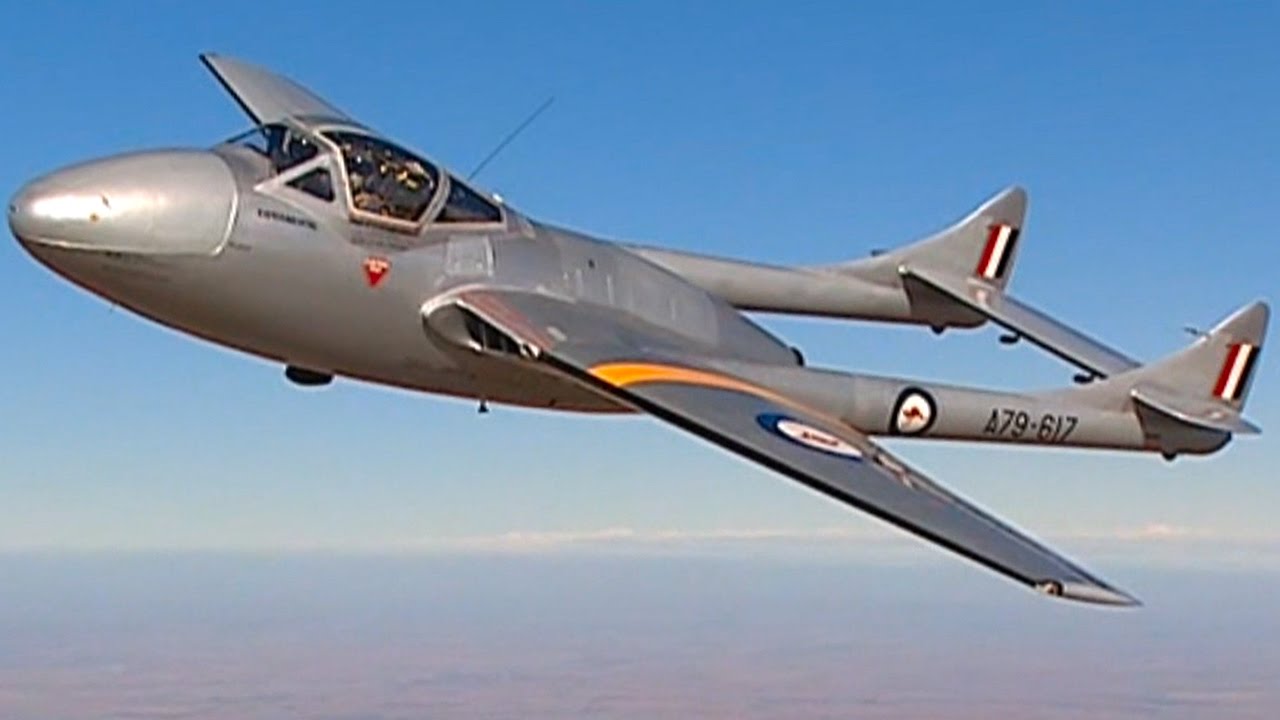
Originally scheduled to fly over Brisbane at 11.30am. and land at Amberley at 11.59, the Vampire did not arrive until 3.53pm. The Vampire was scheduled to fly over Brisbane for a short period between 8.45am until 8.55 before it returned to Sydney at 3.53pm. It was one of the features of Empire Air Day marking the beginning of Air Force Week. Thousands of people who watched for the aircraft were disappointed. A large number telephoned The Courier-Mail. Three different estimated times of arrival were received by Amberley officers during the day. Shortly after noon a message from Sydney stated aircraft would arrive at Amberley at 1.45 pm. This was later put back to 2.44. At 2.55pm the control tower received a message that the air-craft’s estimated time of departure from Coff’s Harbour, where it refuelled, was 3.05 pm and that it was due at Amberley at 3.50 pm.
Piloted by Wing Commander D.R. Dimming of Point Cook, the Vampire broke the record for flying time between Brisbane and Sydney. The Vampire flew from Sydney to Coff’s Harbour (270 air miles) in 48 minutes and from Coff’s Harbour to Brisbane (200 air miles) in 40 minutes. This included two circuits of Amberley before landing. The Temporary Commanding Officer at Amberley (Wing Commander R.C. Cresswell) said that the delay in arriving was due to last minute alterations of the Vampire’s itinerary, of which Amberley was not notified. The aircraft had to wait at Coff’s Harbour for a Dakota aircraft carrying its refuelling apparatus and maintenance crew. Wing-Commander Cresswell said that the Dakota could not have preceded the Vampire to Coff’s Harbour to avoid the delay of two hours there. The Dakota carried the maintenance crew which had to wait until the vampire had taken off from Sydney.
The aircraft was being tested under Australian conditions, and had to have special maintenance men. Nearly 3500 cars were parked in the grounds of Amberley, which was open to the public for the first time. The sightseers inspected Lincoln, Liberator, Mosquito, Mustang, Spitfire and Anson aircraft. Special buses running from Ipswich to the Aerodrome were packed throughout the day.
Jet’s new record, Canberra to Sydney
An R.A.A.F. Vampire jet fighter shattered flying records between Canberra and Sydney yesterday. Piloted by Wing Commander D. R. ('Gell') Cumming, of Point Cook, the Vampire left Canberra at six minutes to four and reached Richmond aerodrome at 22 minutes past four, 28 minutes later. Passenger planes normally fly from Canberra to Sydney (155 miles) in one hour five minutes. Sunday Mail, 23rd May 1948
See the newspaper report HERE

Back Go to page: 1 2 3 4 5 6 7 8 9 10 11 12 13 14 15 16 17 18 19 20 Forward
